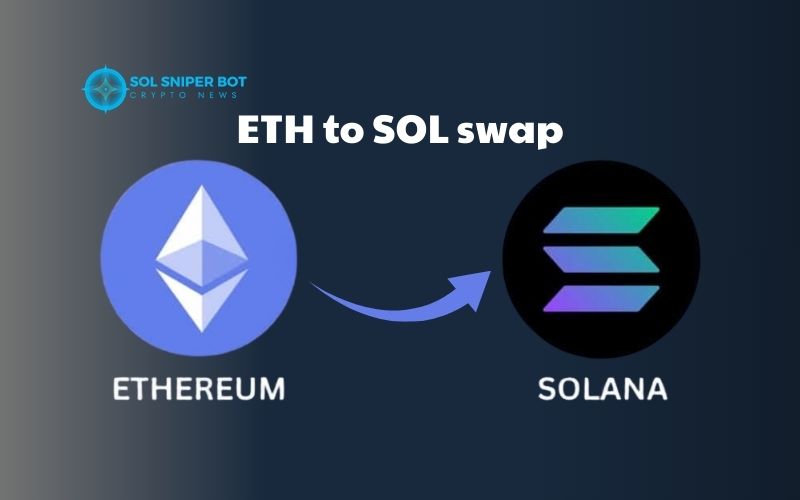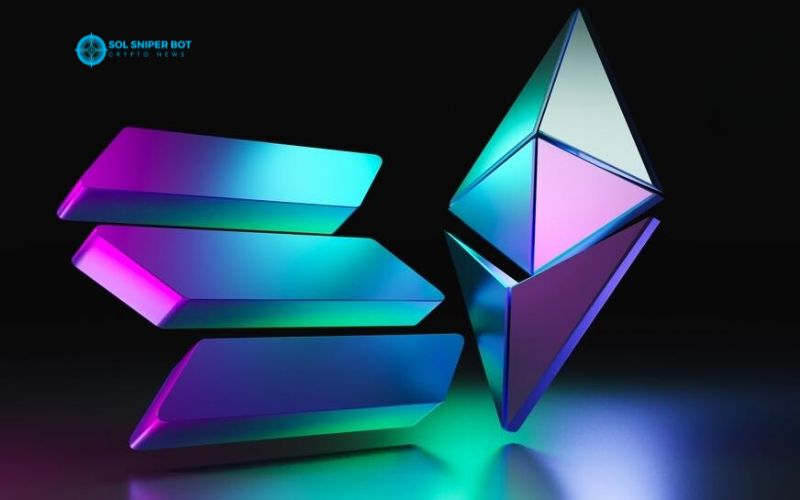In the rapidly evolving crypto market, ETH to SOL swap is becoming increasingly popular due to the flexibility and potential of both tokens. Ethereum (ETH) stands as a leading blockchain platform with a diverse ecosystem, while Solana (SOL) is known for its fast transaction speeds and low fees. This article will guide you through an efficient and cost effective swap process, while also offering optimization tips to help you make the most of your transaction.
Contents
Why you should consider an ETH to SOL Swap?
Ethereum (ETH) and Solana (SOL) are two of the leading blockchain platforms, each with its own unique strengths. Ethereum dominates the DeFi ecosystem, offering a vast range of decentralized applications and smart contracts. Meanwhile, Solana stands out for its exceptional scalability and extremely low transaction fees, making it a go to platform for high frequency users. By choosing an ETH to SOL swap, investors can tap into Solana’s vibrant ecosystem, including NFT marketplaces, GameFi projects and emerging decentralized platforms.

Swapping ETH to SOL also enables users to diversify their crypto portfolio and reduce reliance on a single blockchain network. This strategic move not only spreads out risk but also positions you to take advantage of growth in multiple ecosystems. For those looking to explore faster and cheaper blockchain environments, SOL presents a strong case. Additionally, as more projects launch on Solana, early participation can provide greater rewards. It’s a smart shift for anyone aiming to stay ahead in the ever evolving crypto landscape.
Popular methods for ETH to SOL swap
Conducting an ETH to SOL swap has become increasingly flexible thanks to the wide range of tools and platforms now available. Below are three of the most common methods today, from using non-KYC DEXs to integrated wallet swaps, offering users maximum convenience and control.
Using Non-KYC DEXs
One of the most popular ways to perform an ETH to SOL swap is through decentralized exchanges (DEXs) that don’t require KYC, such as dExch. This is especially helpful for users who value privacy and prefer not to share personal information. Transactions are typically processed within 5 minutes, making this a great choice for fast swaps. The fixed fee of $10 per transaction is reasonable, especially for larger trades. However, users must be careful and skilled at verifying wallet addresses to avoid preventable errors.
In addition to speed and convenience, non-KYC DEXs give users access to platforms that are not restricted by geography. This is a significant advantage for international traders or users in countries with strict regulatory frameworks. On the downside, users bear full responsibility for security and have limited support in case something goes wrong. This method is best suited for experienced traders who understand how DEXs and wallets work. If you’re a beginner, you should weigh the risks carefully before proceeding.
Cross-chain bridge via RocketX.Exchange
RocketX.Exchange is a secure and efficient platform for swapping assets across multiple blockchains. Users simply connect a DeFi wallet like MetaMask or Trust Wallet, choose Ethereum as the source network and Solana as the destination. After confirming the transaction, the swap is completed within minutes and the SOL appears in your wallet. It’s one of the most seamless ways to move assets between these two major ecosystems. RocketX also offers a user friendly interface and real time exchange rate updates.
This method is ideal for those who want to ETH to SOL swap while maintaining transparency and security. RocketX includes built-in tracking tools so you can monitor the entire transaction process. A major advantage is its support for various blockchains, allowing for flexible crypto asset management. However, users still need a basic understanding of wallet connections and transaction details. Overall, RocketX is a trusted option for both individual investors and professional traders.
Direct swap on phantom wallet
Phantom Wallet not only supports storing assets on the Solana network but also integrates a cross chain swap feature. You just need to open the app, select the “Swap” tab, and then choose ETH as the sending asset and SOL as the receiving asset. The entire process takes place within the app, with no need to switch to any other platform. The simple and user friendly interface helps reduce errors and save time. Notably, the ETH to SOL swap process takes just a few minutes with reasonable fees.
The direct swap integration makes phantom the top choice for those who frequently trade in the Solana ecosystem. You don’t need to register on an exchange or deal with complicated connections; everything is done with just a few simple steps. This is the ideal solution for both beginners and experienced investors looking to optimize speed and security. However, you should still carefully check all details before confirming to avoid making mistakes in the transaction. Phantom truly is a versatile wallet in today’s Web3 world.
Tips to optimize costs when performing ETH to SOL swap

One effective way to optimize costs when performing an ETH to SOL swap is to choose the right time to execute the transaction. Gas fees on the Ethereum network can vary significantly depending on the time of day. To avoid high fees, it’s recommended to perform transactions during off-peak hours, typically on weekends or late at night in UTC time, when network activity is lower, thus reducing gas costs. This helps you save a considerable amount for each conversion.
In addition to timing your transactions wisely, using Layer 2 solutions such as Arbitrum or Optimism is an effective way to reduce transaction fees on Ethereum. These solutions help offload the Ethereum network, lowering the cost of transactions before switching to Solana. Furthermore, checking the slippage level is also crucial. Setting a low slippage level (0.5-1%) will help you avoid losing value when the market experiences significant volatility. This helps optimize your profits while performing ETH to SOL swaps.
The trend of ETH to SOL swap in 2025
The trend of ETH to SOL swaps is set to grow significantly in 2025, fueled by advancements in Solana Virtual Machine (SVM) and the rise of cross-chain projects. As these technologies continue to evolve, converting between Ethereum and Solana will become smoother and more efficient. This will enable users to easily transfer assets between two of the most popular blockchains, offering enhanced flexibility for traders and investors.
Moreover, solutions like LayerZero and Wormhole are reducing swap times to under two minutes, making multi-chain investing more accessible and efficient. These advancements open up exciting opportunities for users looking to maximize their portfolio. As a result, 2025 is expected to witness a rise in cross chain opportunities, increasing the ease and profitability of asset transfers between different blockchain ecosystems.
ETH to SOL swap is an effective solution for diversifying your investment portfolio and taking advantage of the benefits of two leading blockchains. By choosing the right platform, optimizing costs, and managing risks, you can execute transactions safely and cost-effectively. For reliable information and updates on crypto related trends, continue following Sol Sniper Bot.
